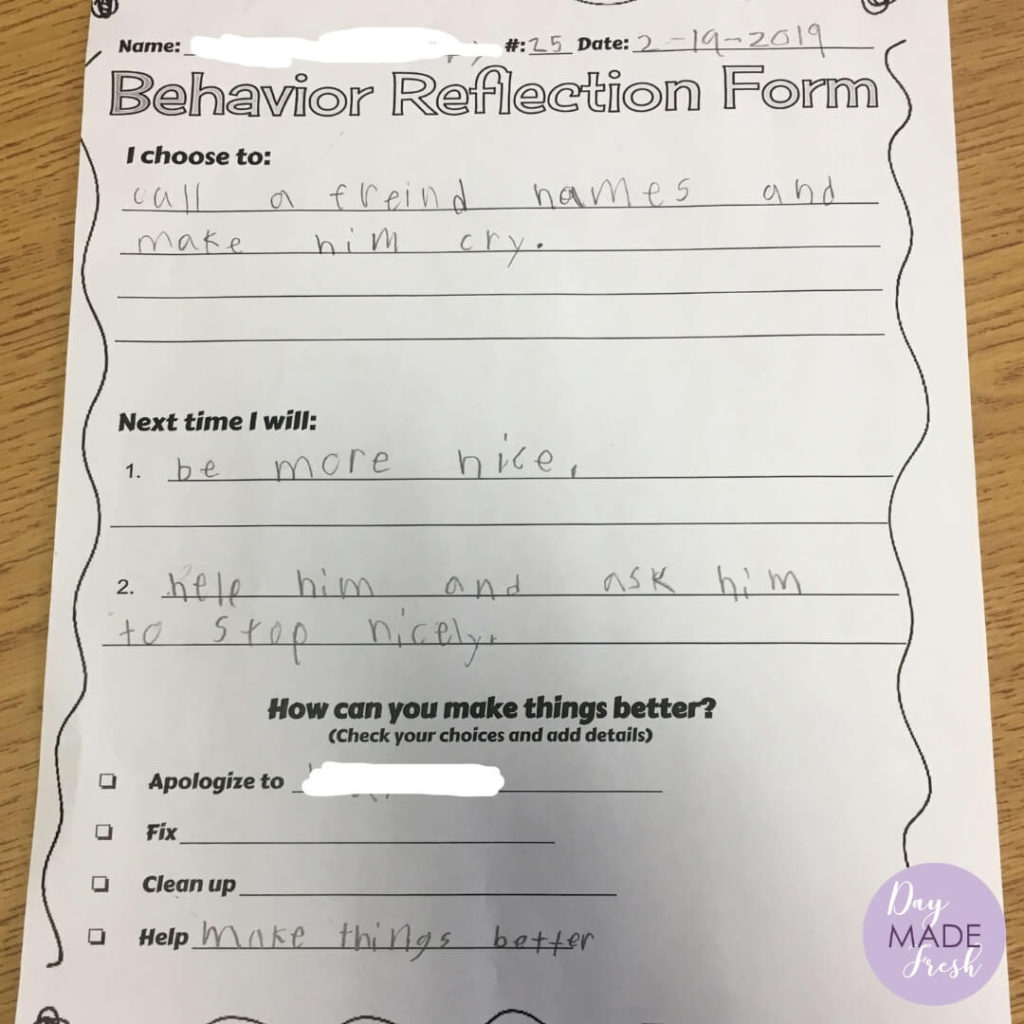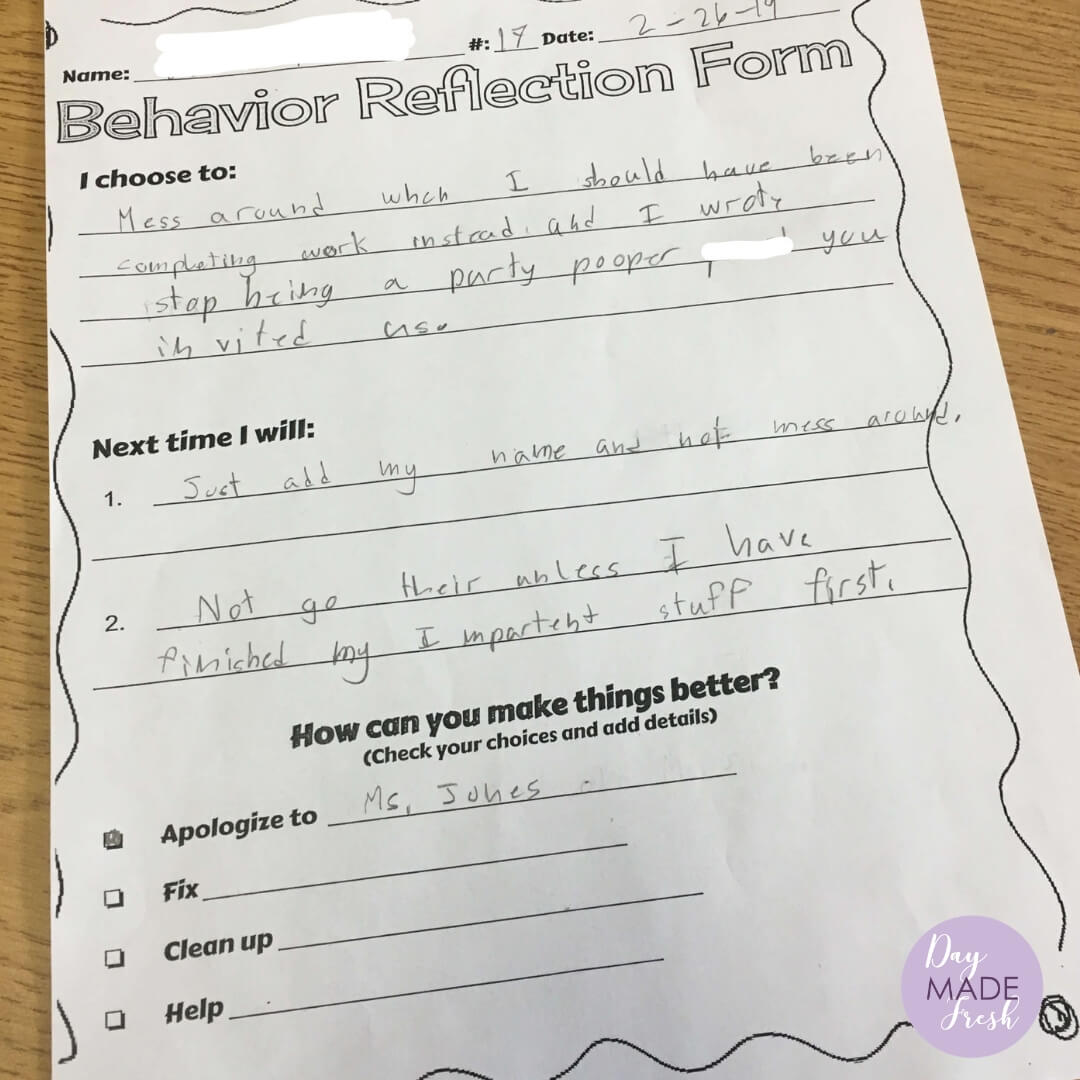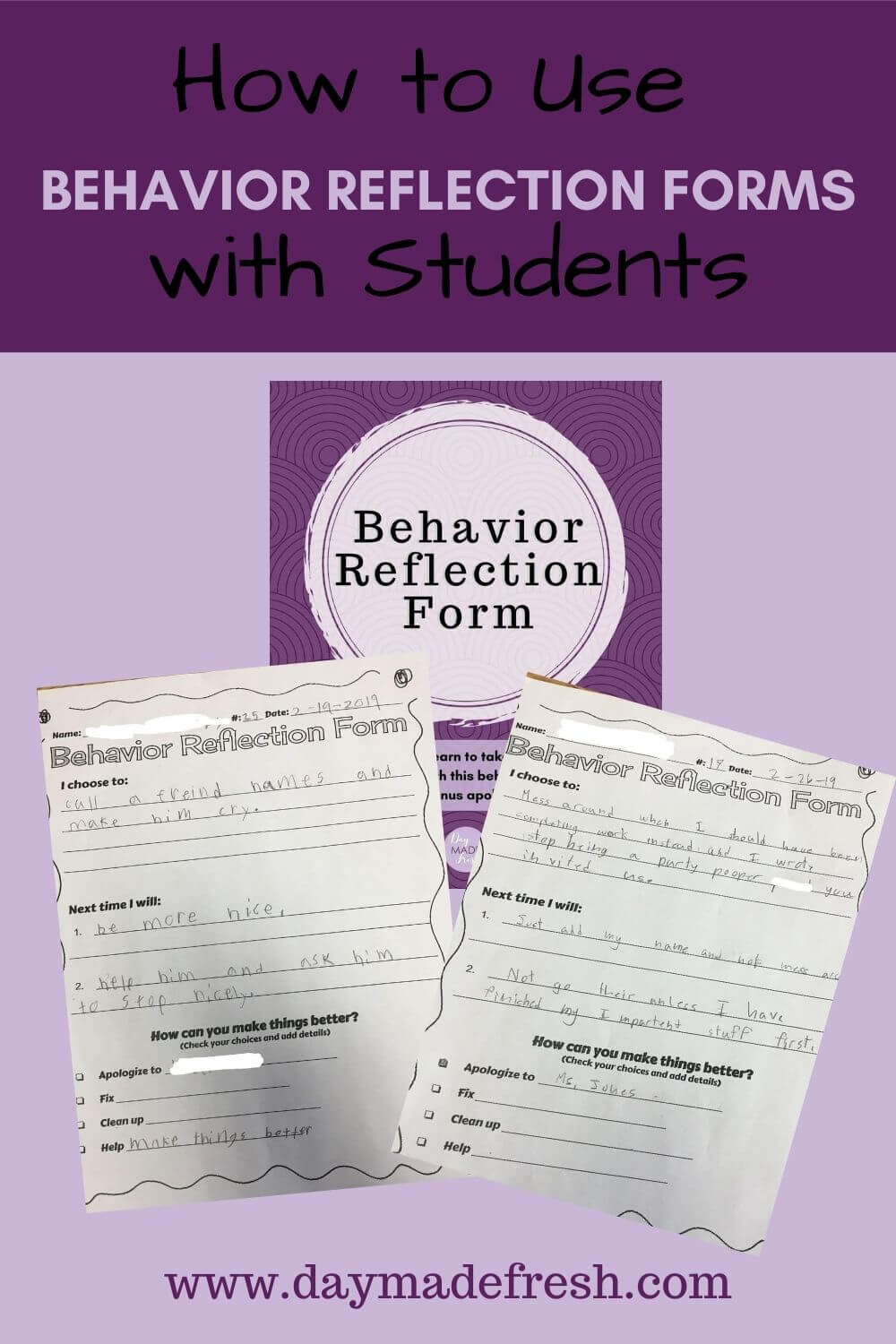Navigating student behaviors can be a
Behavior Reflection Forms Help Students with Self-Reflection
To implement behavior reflection forms successfully in your classroom you will need to model how to use the form. Students should also practice the form. Once you begin using the form it is important to use it with fidelity. This way students see the process as fair and predictable. You also want to be careful not to overuse it. Finally, take the time to discuss the completed form with the student. This step will help both you and the student learn from the experience.
Set yourself up for success
Take the time when you first start using a behavior reflection form to show students how to use the form. M
When in the middle of an issue students are less likely to be engaged listeners and will be more defiant. The form could also come across as a punishment or consequence instead of a tool to help the child.
By pre-teaching how to use the form you can hand the form to the student with a minimum of verbal interaction. This will give them and you time to process and calm down before discussing
Ideas on How To Introduce Behavior Reflection Forms
- Model filling out the form yourself. So you can show students your expectations for a complete form.
- Model receiving the form calmly and filling it out without arguing.
- Have students practice filling out a form based on an example situation.
- Have students act out receiving the form, filling it out, and discussing it with you.
- Read a story with a character that makes a bad choice. Have students fill out the form as that character.
- Lead a class discussion about examples of completed forms. Have students identify what the examples did well and what could have been done better.
Related Post: Why You Need A Classroom Management Plan
When to use the form
This behavior reflection form works for a variety of behaviors, so this makes it easy to adapt to your needs. I’ve used it successfully with first, third, and fifth graders. One important factor in having the form be effective is to not overuse the form.
The purpose of the form is to have students take a break and reflect on their choices. If you have students do this every time they blurt out or forget to write their name on their paper the form will lose its effectiveness.

Instead, focus on the “bigger” behaviors that need more than a quick redirection as the consequence. Examples of these behaviors include picking on a classmate, bullying, hitting or other physical violence, lying to an adult, breaking a material, etc.
This does not mean to never have a student fill out a behavior reflection form for smaller behaviors. It can be helpful to use a form if there is a student that frequently demonstrates a smaller behavior. Especially if previous redirects haven’t changed the behavior.
Now what…
Having the student complete the behavior form is not going to magically change their behavior. The most important step is to take the time to have a conversation with the student.
One of the benefits of this process is it helps s
Try to keep the conversation private, reassure the child that you are not mad at them, and use the form to guide the discussion.
You will see the student’s perspective of the

Some students may need help with including specific details or coming up with a reasonable plan. The reason the child was misbehaving may be that they don’t know or understand what they should be doing. They will need guidance in what is appropriate behavior.
Some students may need help with including specific details or coming up with a reasonable plan. The reason the child was misbehaving may be that they don’t know or understand what they should be doing. They will need guidance in what is appropriate behavior.
Guide them by offering examples and asking clarifying questions. By not telling the child exactly what to write they will begin to learn how to make decisions on their own.
ask clarifying questions such as:
- What made you feel this way?
- What happened before ….?
- What did you do? (If they’re writing what others did)
- I noticed … Why did you …?
- You wrote that you will… What will that look like?
Ready to feel more preapred to handle student behaviors?
General Tips & Tricks
- Keep completed forms. This will help with tracking behavior data and can be useful when having a meeting with parents. It’s hard to argue that
a behavior is or is not happening when written in the child’s hand. - Don’t make the form a battle. If the child refuses to fill out the form give them options. For example, tell them they can fill out the form now or at recess. Another option to offer is that they can fill out the form and deal with the issue at school or call
their parents. - Use the forms to communicate with parents. If the child fills out 3 or more reflection forms per day or week send copies home to parents.
Behavior reflection forms for students are a beneficial tool to help students reflect on their choices and guide teacher-student discussions. Take the time to model how to use the form. Have students practice using the form to make the process run smoothly. A follow-up discussion will help the child learn from the behavior. The process as a whole will build on the teacher-student relationship.
Related Post: Are You Tired of Dealing with Challenging Student Behaviors?
Related Post: Develop Missing Behavior Skills with Student Behavior Check Sheets
